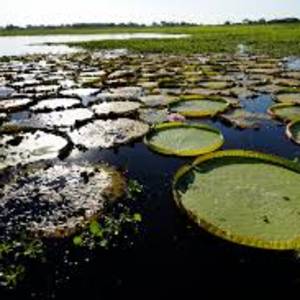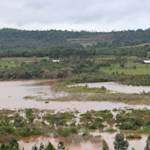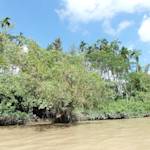Sahelian Wetlands
2023 CE • Mali, Niger, Chad, and Sudan
"The Sahel is a semi-arid belt extending across Africa for some 5,500 kilometres, from the Atlantic Ocean to the Red Sea . . . The Sahel has plenty of land; what it lacks is water, which makes its wetlands – fed mostly by rivers draining wetter regions to the south – vital resources . . . They expand dramatically when fed by rivers in spate during the wet season, but shrink with the rivers during dry times. These annual flood pulses are vital to the biological health of the wetlands, with the life cycles of many species – including fish, waterbirds, woodland trees and grasses – attuned to the seasonal cycle . . . In a region where 20 million people are categorised by the UN as food-insecure, mainly due to lack of water, the Sahel’s wetlands are a lifeline and a crucial insurance against environmental extremes . . . Most rivers in the Sahel flowed freely until about 1980. But in the aftermath of the great drought of the mid-1970s, many governments and aid agencies built large dams to store water and control their flows with the intention of providing both hydroelectricity and food security . . . The Sahel’s wetlands are becoming smaller, less biologically diverse and less productive . . . Of the 127 bird species crossing the Sahara to overwinter in the Sahelian wetlands, 75 are in decline, including waterbirds such as the Glossy Ibis, Ruff, and Black-tailed Godwit.” The degradation of the Sahelian wetlands poses a significant threat to both the wetland wildlife and the surrounding local communities, who heavily rely on this ecoregion for survival.
F. Jane Madgwick, Robert Oakes, Fred Pearce & Rebecca E. Tharme, "Water Shocks: Wetlands and Human Migration in the Sahel", edited by F. Jane Madgwick and Fred Pearce, Wetlands International, 2017.
Image: Eric Montfort via Flickr, Attribution-NonCommercial-NoDerivs 2.0 Generic (CC BY-NC-ND 2.0)


Learn about Maya Lin’s fifth and final memorial: a multi-platform science based artwork that presents an ecological history of our world - past, present, and future.

Discover ecological histories and stories of former abundance, loss, and recovery on the map of memory.

Learn how we can reduce our emissions and protect and restore species and habitats – around the world.

See how art can help us rethink the problems we face, and give us hope that each one of us can make a difference.

Help make a global memorial something personal and close to home. Share your stories of the natural world.


